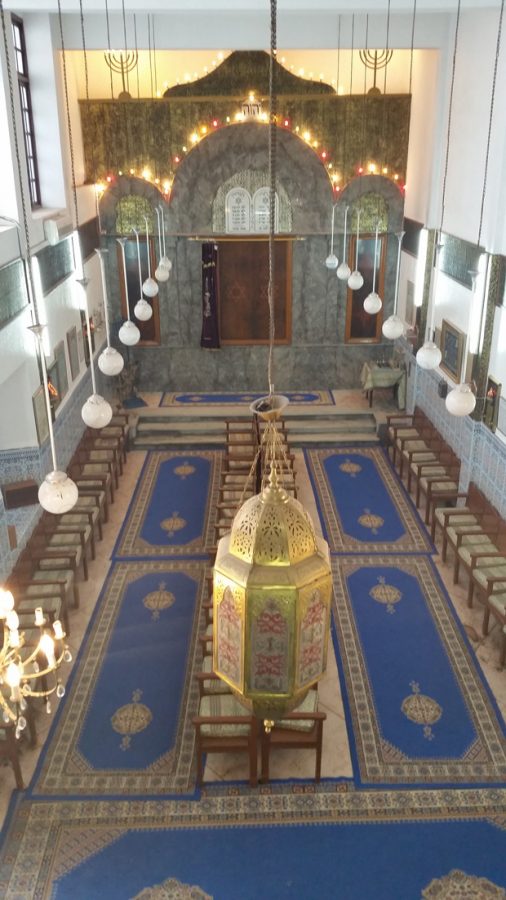Finding inspiration in Morocco’s Jewish community
Published March 19, 2015
Purim makes me think of Morocco.
I used to think about dressing up in costume, the exchange of mishloach manot, booing Haman during the reading of the Megillah, and of course, eating hamantaschen. So how does Morocco come into play? Short answer: I am still processing my February trip there to explore Jewish life with the American Jewish Joint Distribution Committee (JDC).
Each Purim, in Marrakech, part of the Jewish Moroccan diaspora returns home, with youth from France coming to celebrate and provide a spark to the small, 150-person community. The festival marks the triumph of the Jewish people over a scheme to destroy them. During holidays like Purim a fraction of the once-300,000 strong Jewish Moroccans returns to visit families and friends and celebrate Purim. For all the joy of Purim, beneath the surface, the disappearance of Jewish Morocco lurks. Only 3,000 or so Jews remain in Morocco.
In no way do I suggest that Jewish Morocco faces destruction from government forces, especially not from King Mohammed VI. In fact, Jews hold advisory roles to the King, have secured commitments from the government to preserve Jewish synagogues and cemeteries, and are recognized in the country’s constitution. Even one of the major daily newspapers includes the Hebrew date on its masthead. Setting aside the political gestures (even if not acted upon), what quality of Jewish life exists in what, after all, is an Arab country
Jewish Moroccans co-exist with their fellow Muslim nationals. But do not mistake this co-existence for the open society in which we live. To wear a Star of David, attend a grand synagogue, or rally in support of Israel. The American Jew rarely has to give these acts a second thought. Moroccan Jews do not live in the shadows, but their institutions always have security guards, their synagogues and homes are inconspicuous, and their ability to speak freely about Israel among (Muslim) “friends” or in the public square is curtailed. Co-existence in no way approaches the ideal of fraternité.
In light of the persecution of Yemeni Jews, rising European anti-Semitism, and oppression of which I am unaware, that Jewish Moroccans have been able to maintain a vibrant community (mostly free from violence) is an accomplishment. Casablanca, the heart of the Moroccan Jewish population, has multiple Jewish schools, 20-something synagogues, and several kosher butchers. More than a large American city, such as St. Louis or Houston!
Despite the challenges, I firmly believe in supporting continued Jewish life in Morocco, which dates to the destruction of the First Temple. Luckily, the JDC makes sure that Jewish Moroccan children can attend a Jewish school irrespective of financial means; that the elderly have a Jewish assisted living community; that historic synagogues do not fall prey to commercial or destructive interests. Maybe one day the Purim celebrations there will grow. In the meantime, I am proud to support and share a small slice of Jewish Morocco’s story.
A native of St. Louis, Scott L. Friedman is an attorney who lives in Houston, Texas. Reach the author at [email protected].















